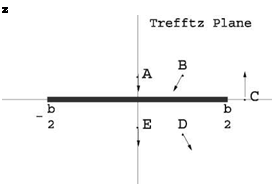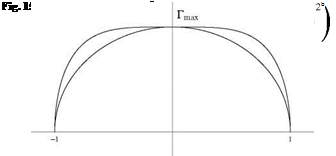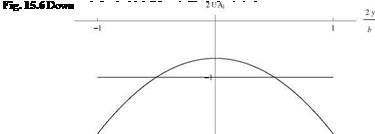Lifting Line Theory (3-D Inviscid Flow)
15.2.2.1 Flow Model
The vortex sheet is a stream surface, wetted on both sides by the fluid, hence the tangency condition imposes that the ш-component of the perturbation be continuous. Across the vortex sheet the pressure is continuous, hence the u-component of the perturbation is continuous (Cp = —2u/U).
Velocity vectors near the vortex sheet: see Fig. 15.4.
Fig. 15.4 Induced velocities near the vortex sheet
15.2.2.2  Improved Lift of a Rectangular Wing
Improved Lift of a Rectangular Wing
The combination of modes 1 and 3 is represented in Fig. 15.5.
The total lift of a wing is given solely in terms of A1 and can be written as CL = n AR A1. The maximum circulation is obtained for t = | and is rmax = 16 UbA1. Hence A1 = 1тиъ and the corresponding lift is Cl = n AR jU = 8 (cl )eUiptic, a
12.5 % increase for the high lift rectangular wing.
![]()
 |
|
As seen in class, the downwash for the high lift wing is given by
The distribution of downwash is parabolic and is compared with that of the elliptic wing WT[y(t^elliptic = –Ir. See Fig. 15.6.
15.2.2.3 Drag Penalty
The induced drag of the wing is given by
![]()
![]()

 |
CDi = nAR a2^1 + ‘"+nAl + ••• ^ = nAR a2 The drag penalty is a 3.7 % increase in induced drag.














